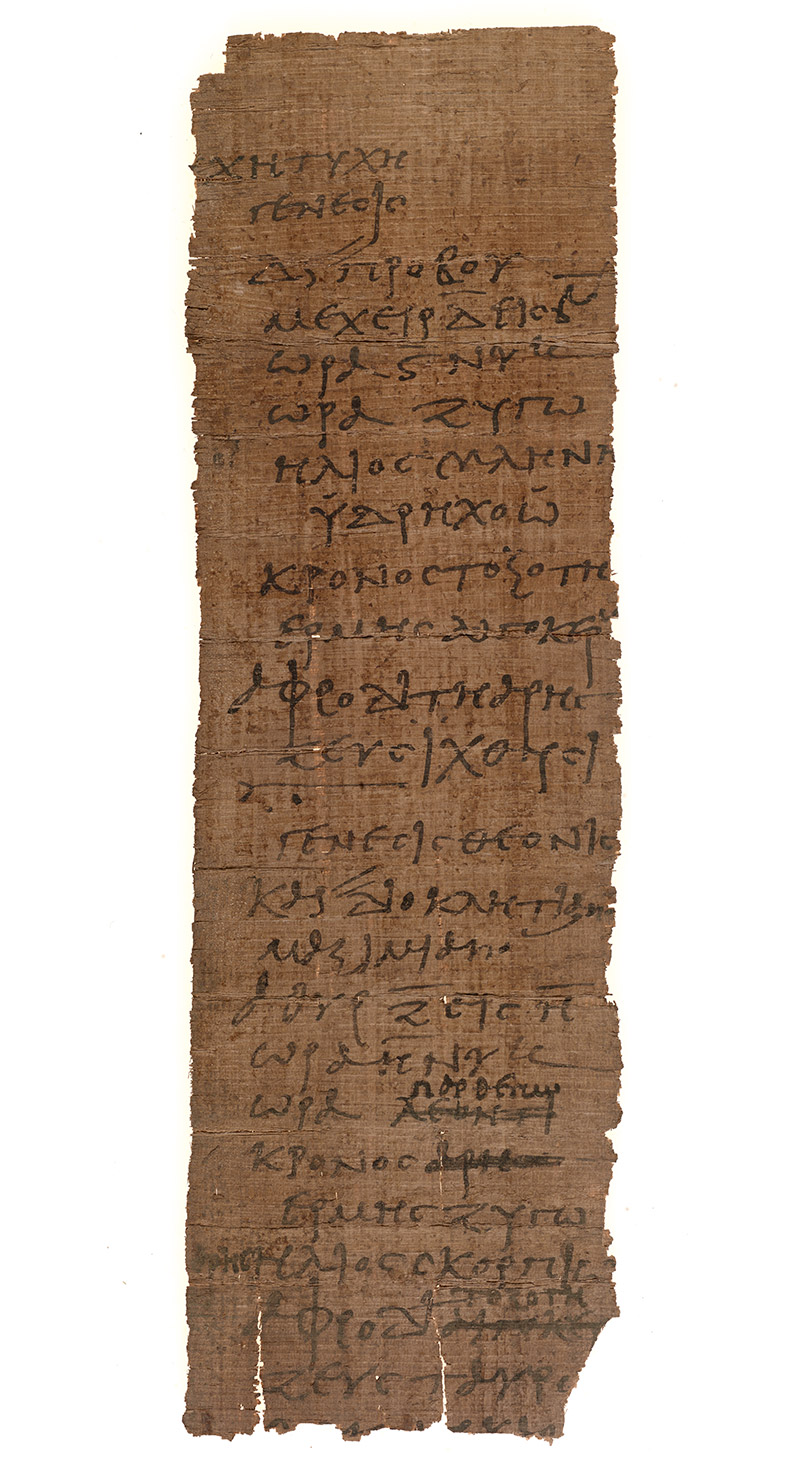Popular Astronomy: Horoscopes

- Horoscopes for two births, one in the 29/30th of January 279 CE and the other in the 3/4 of November of 304 CE.
- P. Mich. inv. 6664, University of Michigan Library, Papyrology Collection.
Astrology entered the Graeco-Roman world at the end of the Hellenistic period and further developed during the Imperial period. It first developed in Babylonia by at least the early second millennium BCE. Early Babylonian astrology was concerned with making predictions about the king and the state. During the first millennium BCE, the Babylonians developed new forms of astrology including personal astrology, that is, predictions about the life of an individual based on the heavenly bodies’ position at the time of birth. This type of astronomy was further developed later in the Greek world during the Hellenistic period, when Mesopotamian astrological methods were combined with other Egyptian astrological notions (e.g., the decans) and Greek mathematical astronomy. Even if pagan philosophers and Christians fought against its practice, astrology became very popular. Hence, we have many papyri with horoscopes for specific individuals like the one presented here.
In this papyrus there are two horoscopes for two births, one on the 29/30 of January of 279 CE and the other on the 3/4 of November of 304 CE, divided by a line with a fork at the left margin (a sign called diplē obelismenē or forked paragraphos). The second horoscope is for a girl named Theonis. The first one is anonymous; scholars have suggested that, given the time span that divides the two horoscopes (25 years), the horoscope dated to 279 BCE could be that of one of the parents of Theonis who, on the occasion of Theonis’ birth, asked the astrologer to write both horoscopes.
The astrologer gives the day and hour of the birth and then lists in which zodiacal sign the different planets were (i.e., in which section of the ecliptic they were located) at that time; for example, in the first horoscope, the Sun and Moon are in Aquarius, Saturn in Sagittarius, Mercury in Capricorn, Venus, Mars and Jupiter in Pisces. In the second horoscope, that for Theonis, the astrologer has corrected some data (the name of two zodiac signs and a planet) by striking through the incorrect words and writing the corrections in the interlinear space (for the signs at ll. 18 and 22) and on the side (for the planet at l. 21).
Most often the horoscopes were written long after the time of the birth, using ephemerides (i.e., tables giving daily positions, such as those in P.Mich. inv. 1454), almanacs (i.e., tables giving positions at different intervals such as 5 days, 10 days), and “sign entry almanacs” (i.e., tables giving the dates when a planet enters into a new sign of the zodiac). These were of course technical astronomical data, which were however also used by astrologers to make predictions about people’s lives. In fact, astronomers were also astrologers in antiquity; even the great astronomer Ptolemy, in addition to the Almagest, which is the high point of Greek mathematical astronomy, also wrote an entire book on astrology, the Tetrabiblos.
Select Bibliography
- Baccani, Donata. 1991. Oroscopi greci: documentazione papirologica Ricerca papirologica 1. Messina: Sicania: 173-177.
- Neugebauer, Otto, and Henry B. van Hoesen. 1964. “Astrological Papyri and Ostraca. Bibliographical Notes.” Proceedings of the American Philosophical Society 108: 57-72, at 67-69 [no. 279].